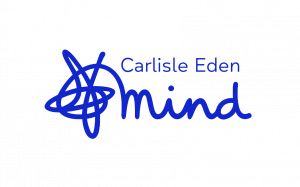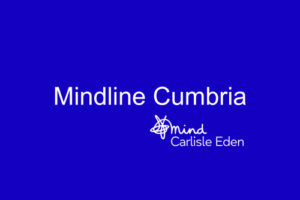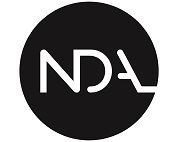Another year, another time for broken promises? Christmas is over. How many leftover “brussels” did you eat ? Too much ? Did you get social media “nudge” notifications or TV advert reminders “sprouting up” pressurising you to get fit, eat less, join the “dry January” movement or giving advice on how to spend when our bank accounts are running on the fumes of emptiness ?
One reason we make New Year resolutions is the “fresh start” feeling: an annual date on your calendar that motivates you to better yourself. In 2023, 30 million people in the UK made new year’s resolutions, with health (28%), money (27%), family (24%) and self-improvement (21%) topping the “I promise myself” charts. Two-thirds of Brits will be setting themselves New Year’s resolutions for 2024. Generation Z is the most focused on self-improvement: 97% will be making resolutions for 2024, while just 14% of the silent generation will be doing so. https://www.finder.com/uk/new-years-resolution-statistics On average, British adults are only likely to last seven weeks before giving up and 21% of British adults only lasted for a month before breaking. https://journals.plos.org/plosone/article?id=10.1371/journal.pone.0234097
We hear it every time the calendar flips: “New Year, New Me! 2024 is my year! “. New Year’s day is just one day out of 365. The other 364 days have the same amount of hours and opportunities. Why wait until the first day of the year to make a change that you can implement any time of the year ?
Are New Year’s resolutions tricks built to take advantage of you as a consumer ? Despite being heavily ‘influenced’ by social media, new year’s resolutions aren’t legally mandatory. The evenings are still dark and gloomy, Cumbria is as usual, cold, wet and windy. The sparkle of Christmas no longer brightening up your home and mood. Why would we pressurise ourselves to the agony that are new year’s resolutions? the answer is because everybody else is.
Let focus on four Christmas indulgencies that risk poor wellbeing: a sedentary lifestyle, heavy use of alcohol, eating too much salt, sugar and fat and spending money you don’t have. People vary in their commitment to reduce or stop those four self-imposed punishments. In essence, it means changing what you do. Making change a reality, needs purpose. The amount of motivational change depends on how much pressure there is to act differently or the anticipation it is going to be really very difficult or your action change is likely to last not that long. You may privately just not want to do it. Its like having two “internal arguing voices”, two “conflicting opinions”. Two parts of you, set in opposition with each other.
I am going to explore with you how to can have a better chance in succeeding in these four typical new year resolutions.
The following section is based on the key principles of Motivation Interviewing. Stephen Rollnick is a co-founder. Motivational Interviewing was first introduced 1983 by William Miller in the Mental Health field. Interest in learning Motivational Interviewing was born out of frustration in therapy conversations about change that do not always go well: the more you try to insert information and advice into others, the more they tend to back off and resist. It’s a therapy problem. This form of psychotherapy is different compared to Cognitive Behaviour Therapy. Motivational Interviewing interventions are well developed and researched. The effects are significant and durable.
The spirit of Motivational Interviewing is
- Collaboration: working with someone to produce change
- Eliciting: gently drawing out an attitude change from someone
- Autonomy: empowering independence to decide on one’s actions
This involves “coming alongside the person” and helping them to say why and how they might change for themselves. The core components consist of four conditions:
- Empathy: showing warmth and caring to yourself by deeply understanding your personal frame of reference. Your “true and real” self.
- Developing discrepancy: exploring your personal reasons for and against change.
- Roll with resistance: simply confronting yourself directly does not always work It may drive your attitude for change deeper and lead you to be more defensive. It means avoiding a direct head-on argument with yourself.
- Self-efficacy: question and reflect to help you believe you can change
Motivational Interviewing helps by shifting your ambivalence. Developing discrepancy happens when you feel two opposing ways about change. Ambivalence is normal in any process of change. When trying to understand of all the reasons to make a change, you are under internal pressure to explore the other side of change.
When people experience changing a behaviour such as stopping drinking alcohol, they are likely to have strong opposite feelings about not drinking. We want to change and the next minute we are giving ourselves many reasons not to change. Staying the same (continuing drinking) often represents comfort, familiarity, and pleasure. The reasons for change need to be stronger than the reasons for staying the same in order to “tip the balance” for change. The stronger you reflect your point for change; the stronger an ambivalent self will defend the opposing point or the argument not to change. You can practice a self-help form of Motivational Interviewing.
The pros of continuing drinking: Alcohol helps me relax. I enjoy drinking with friends. This eases my loneliness.
The cons of continuing drinking: Hard on my health. Spending too much. Affects my work performance.
The pros of stopping drinking: Feel better physically. Have more money to spend on activities I would enjoy. Less conflict with my family and work colleagues.
The cons of stopping drinking: I’d miss getting high. What to do about friends whom I like drinking with at the pub ? I will get lonely. How do I with deal with stress of loneliness ?
Readiness, or being ready to make a change, can be thought of as a function of the relationship between how important it is for you to make a change and how confident are you in your ability to make the change. One simple way of assessing you are on different dimensions of readiness is a two part scaling ruler.
Now think about the other three indulgencies: eating healthily, getting fitter and spending less. Grab a pen and paper. For each record the pros and cons for starting a new physical activity, nutritional and budget money programme and if you choose to carry on as normal.
Anyone who has ever broken a New Year’s resolution can appreciate the difficulty of behaviour change. Making a lasting change in any ingrained “habit behaviour” is rarely simple or easy. Unlike the way we make a New Year resolution, you need a substantial commitment of time, effort, and emotion. The Stages of Change Model tries to explain such change. The academic science says it works in many cases. Whether people want to lose weight, stop smoking, or accomplish the four indulgencies, no single solution works for everyone. You may have to go through a process of trial and error to achieve your goal. During this period that many people become emotionally vulnerable, will power weakens, so you become discouraged and give up on your behaviour change attempt. To achieve and maintaining your New Year resolutions, you need to try new techniques and find ways to stay motivated. Therapists use these techniques. If you take some time to understand the stages of change and ways to work through each stage, you have a better chance of permanent change.
The Stages of Change Model (TTM) was developed by Prochaska and DiClemente in the 1970s. TTM evolved through studies examining the experiences of smokers who quit on their own with those requiring further treatment, to understand why some people were capable of quitting on their own. It was discovered that people stopped smoking if they were ready to do so. The TTM model operates on the assumption that people do not change behaviours quickly or decisively. Rather, change in habitual behaviour, occurs continuously through a cyclical process. TTM proposes that people move through six stages of change: precontemplation, contemplation, preparation, action, maintenance, and termination. For each stage of change, different intervention strategies are most effective at moving the person to the next stage of change and subsequently through the model to maintenance, the ideal stage of behaviour.
I have devised a wellbeing change tool is a way of supporting and measuring change: the escalator of change. Everyone is different and it’s important to understand each person’s individual circumstances however the pattern of change is similar. Think about an escalator, which you control its movement up and down. It can be controlled to move up but you may feel right now, its not working so you move down: like playing snakes and ladders. You also can control the speed of change from fast to slow.
At the bottom end of the escalator is “stuckness”: not wanting to implement your desired indulgence programme of change. In particular, you have no intention to take change action in the foreseeable future. Foreseeable means within the next 6 months. People at this point often underestimate the pros of changing behaviour and place too much emphasis on the cons of changing behaviour.
From stuckness, we can move to deciding to start new healthy behaviour in the foreseeable future. You recognise that your change behaviour will be problematic. You are more thoughtful and are practically considering of the pros and cons of changing the behaviour, with equal emphasis placed on both. However, you may still feel ambivalent toward changing your behaviour.
The next higher steps on the escalator are when we are starting our preparation work. You now believe that you can make a difference to your life. You are ready to take action within the next 30 days. You start to take small steps toward the behaviour change, and believe changing your behaviour can lead to a healthier life.
Further up the escalator is learning how to make our change journey a reality. It’s a trial and error process. Some things do work but some things don’t, so we need support through this process. In these action steps, you have recently changed your behaviour and intend to keep moving upward the escalator with that behaviour change. You are now acquiring new healthy behaviours. As the change is still new and not firmly embedded, there are occasions when you relapse into your old way of eating, drinking, inactivity and impulsively spend.
Nearing the top of escalator are the maintenance steps. You have sustained your change behaviour change for a while and are committed to maintain the behaviour change going forward. People at this stage, work to prevent relapse that happened in previous escalator steps.
Finally, you reach the top of the escalator and walk onto firm higher healthier ground. You have no desire to return to your unhealthy behaviours and are sure you will not relapse. In reality, this is rarely reached, many people tend to stay in the maintenance escalator steps. This last part of the change journey is rarely used in “paid for” health promotion programmes.
Here is an example of the 10 steps. Try creating your own, based on you as a person, your lifestyle and what you want to change.
Step 1: I can manage this as I am. I have no issues in this area and behave in ways that work well for me and those around me.
Step 2 : Maybe my drinking is causing problems for me but I am fine, that’s the way it is. Every now and again, I am worried about my drinking.
Step 3: Maybe I need to think about my drinking. I am fed up with the negative consequences of my drinking. I want change but I know this is not possible. There are good reasons for me to drink. I am learning more about myself.
Step 4: I am willing to try something but its going to be hard to stick to accepting this change altogether. I am starting to get a sense of what helps me move towards my goal of stopping drinking.
Step 5: I see that I now need to make changes myself to tackle my drinking. I have taken on board that stopping drinking means I have to make serious changes. My beliefs about drinking are changing. I need quite a lot of support to keep things going, without some support, setbacks can knock me off course.
Step 6: I am doing things myself to stop my drinking. I am reducing my drinking. On occasions, stopping for a period of time. I have a sense that I am “up for it”. I need a lot of support to ride the highs and lows and keep the belief alive.
Step 7: I understand I have a problem that needs solving permanently and what I need to do. Change won’t happen unless I help to make it happen. I am exploring my triggers for drinking, reflecting on causes and coming up with ways of dealing with those triggers.
Step 8 : I am getting control over my drinking. I have choices on what I do and choose mostly well. I have new ways of coping with feelings and situations where I am tempted to drink. I have few episodes of drinking but I feel I am more in control.
Step 9 : I am not using alcohol at all. I am using coping strategies to avoid drinking. I do have on occasions, urges to drink. It is sometimes a battle, but with much effort, I don’t drink.
Step 10 : I have now not drank alcohol for six months. The urge to drink is less. I do have mild impulses at times, when I feel vulnerable but I use my well established coping strategies that have proven to work for me.
Look at the escalator steps and get a feeling for how it works. Think about an area of your life where you have made changes and see how that fits. You can then decide to make those four New Year indulgence resolutions . Plot your scores on the wellbeing change tool below to get the big picture. Agree which areas you want to work on, what you are aiming to do between now and the next time you plot your change wellbeing tool.
You can come back to the wellbeing change at regular intervals. You can look at the escalator steps again and agree where you are and plot a new chart to see how the overall wellbeing change shape has changed. Over time, this will help you to build a picture of your own personal journey. You can see where you have come from and how things have changed for you. This can help you to see things in a new way: to put the ups and downs of each year into a bigger picture.
Are you tempted to make a New Year 2024 resolution in a different way ?
written by Chris Graham* views expressed employees own

















